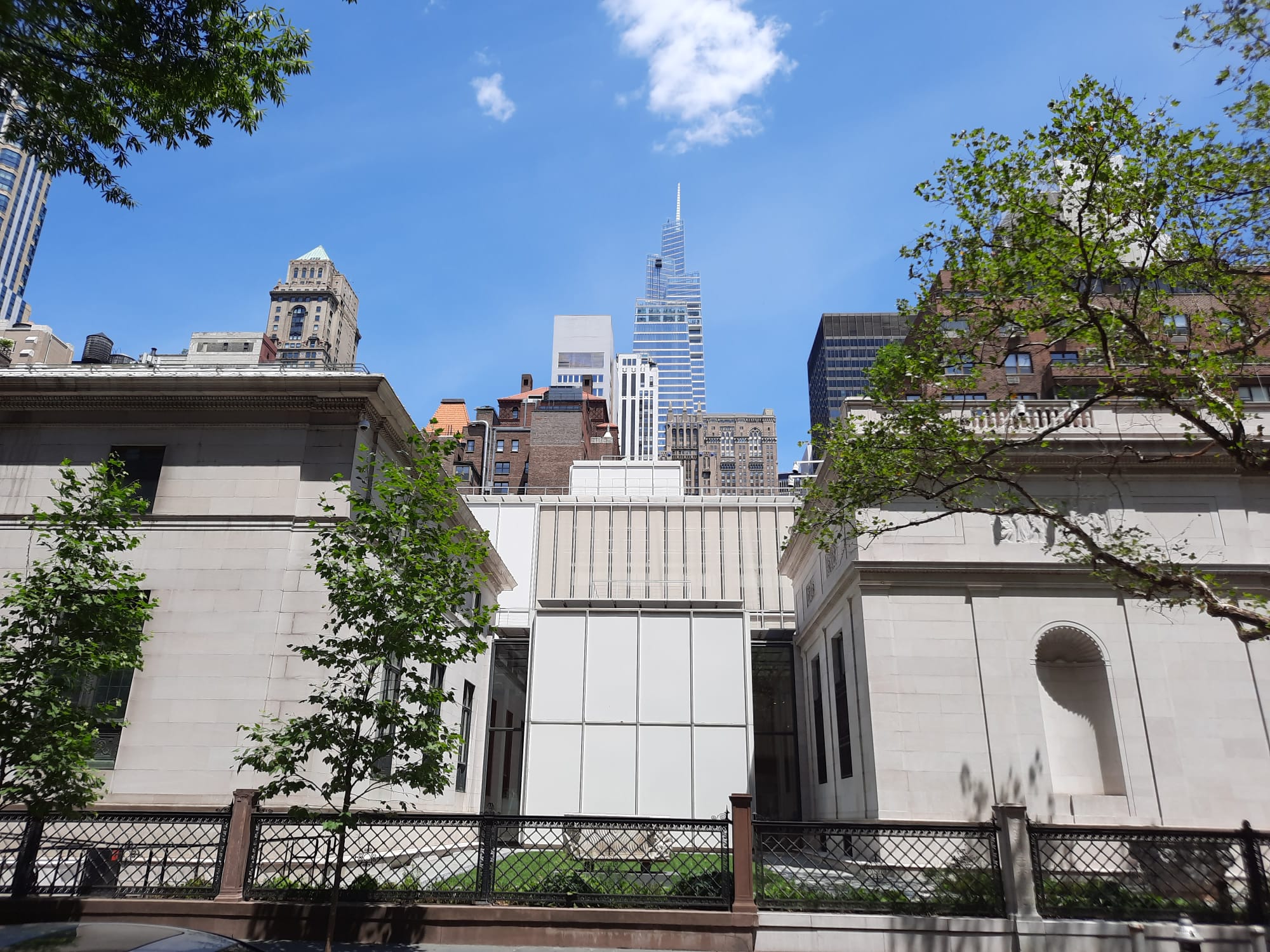The Morgan Library and Museum, New York
A review of the Morgan Library and Museum, a Midtown Manhattan gem. An oasis of outstanding objects: it’s amazing what a robber baron’s budget can achieve!
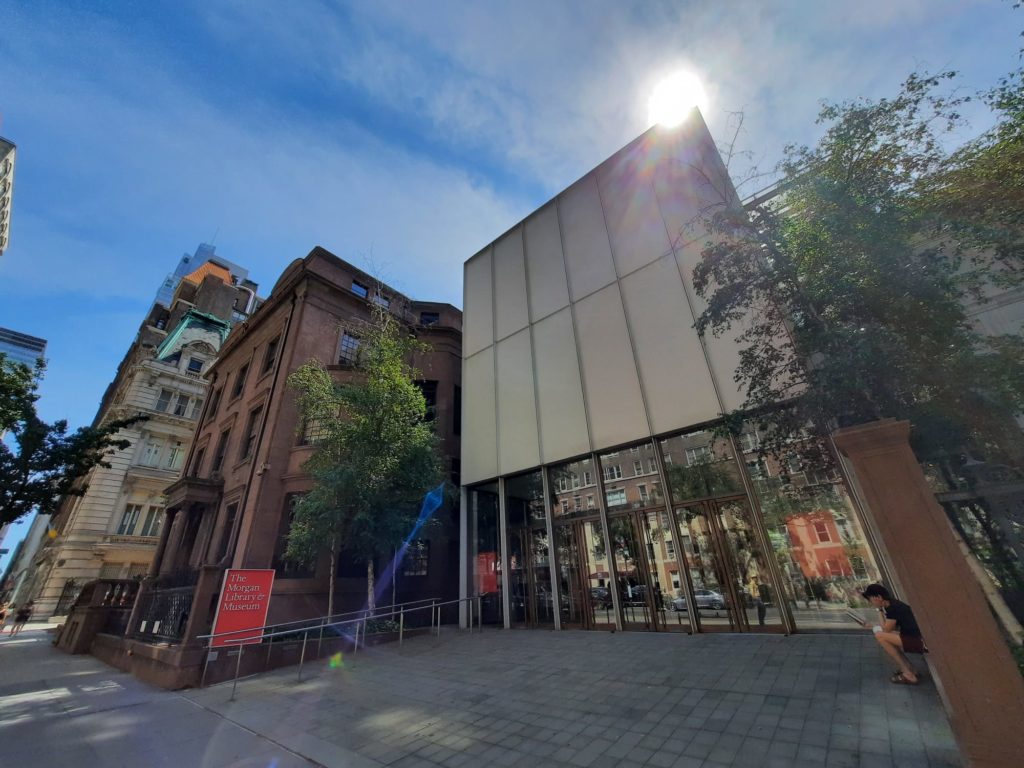
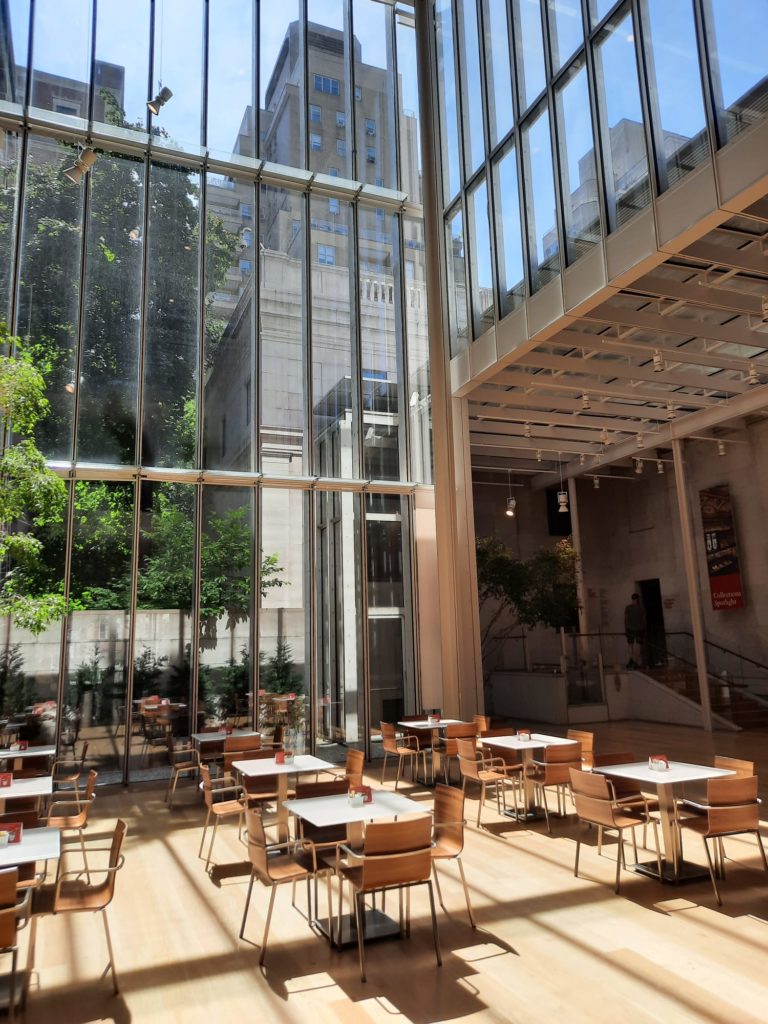
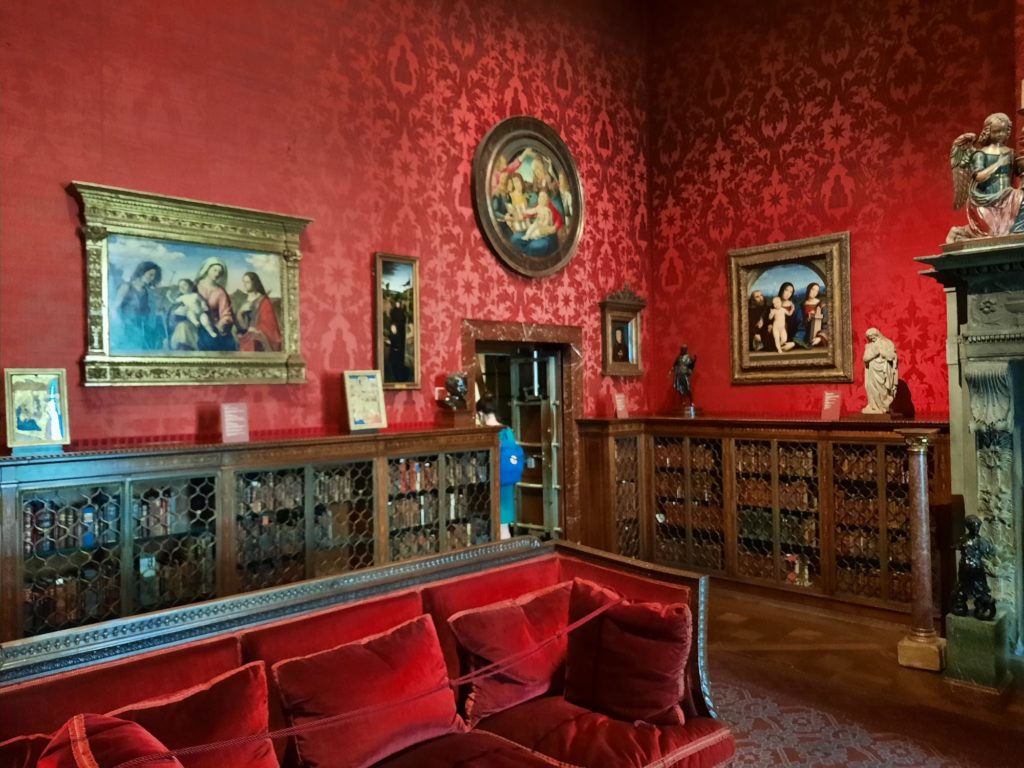
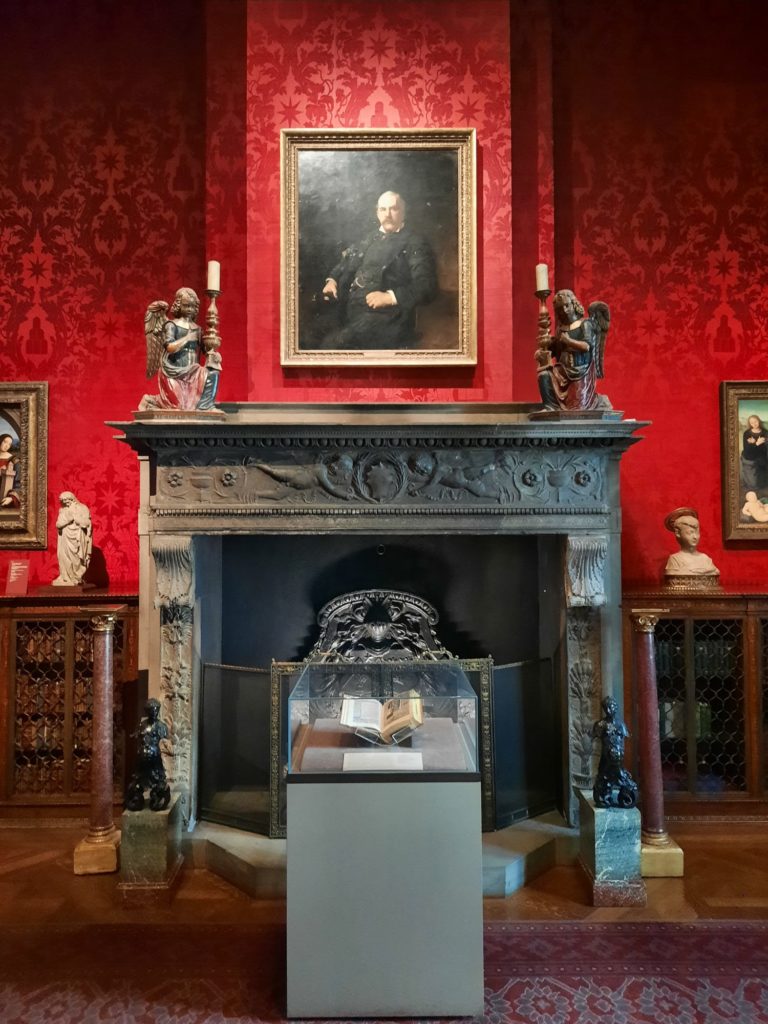
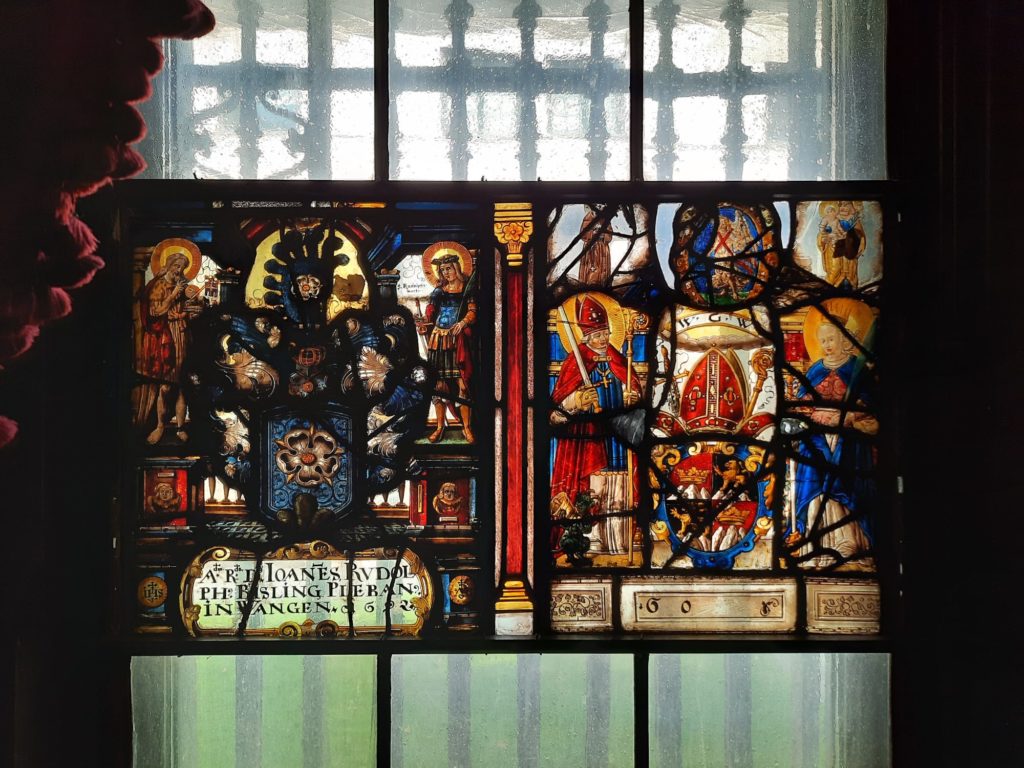
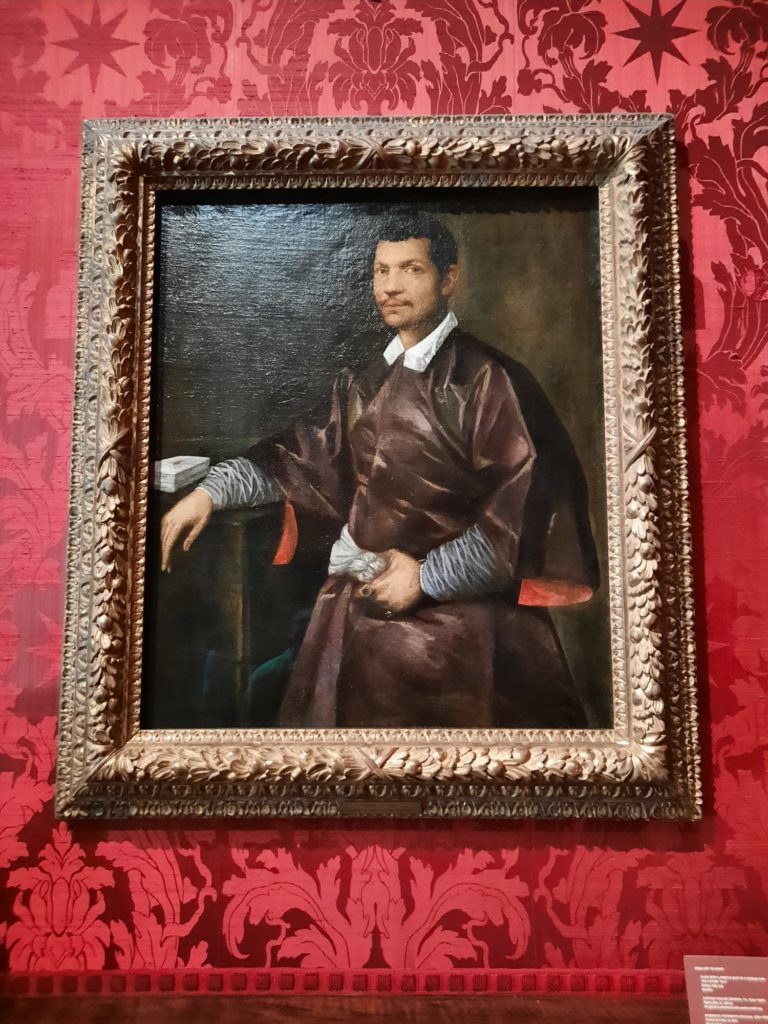
J. P. Morgan And His Collection
John Pierpont Morgan, known as Pierpont, was born in 1837 in Hartford, Connecticut. He was born into an influential family, and his education was geared from the outset towards a career in commerce. He started his working life in 1857 in the London branch of Peabody, Morgan & Co.
After a series of variations of companies with Morgan in the title (too boring to spell out here) and a Civil War scandal, J. P. Morgan & Company took shape in 1895. By 1900 it was one of the most powerful banking houses in the world. Morgan made a fortune, and was a driving force behind industrial consolidation as well as stepping in (with other financiers) to prop up/control the American monetary system in 1907.
But what to do with all that money? Well, J. Pierpont Morgan liked art. He was President of the Metropolitan Museum of Art and important in its establishment. He collected books, paintings and other art objects, clocks and gems. The art critic Roger Fry more or less worked for Morgan for a period as a collector. It was quite a good time for personal collecting: massive fortunes were about, many of today’s big museum collections were nascent or non-existent, and so more important objects were in private hands. With a basically unlimited budget, you could almost write a shopping list. A Gutenberg Bible? Sure, why not get a couple? The sole surviving manuscript of Paradise Lost? No problem! Morgan was not aiming for a comprehensive collection, but rather a collection of big hitters. Exceptional handwritten documents and great literary works: no duds here.
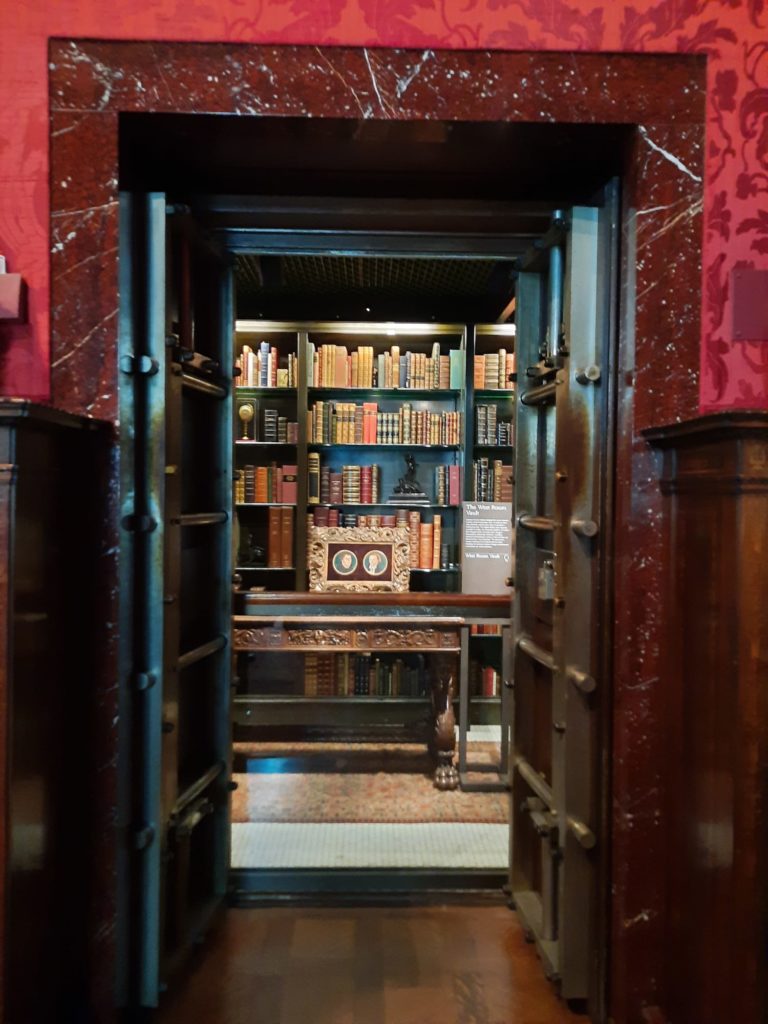
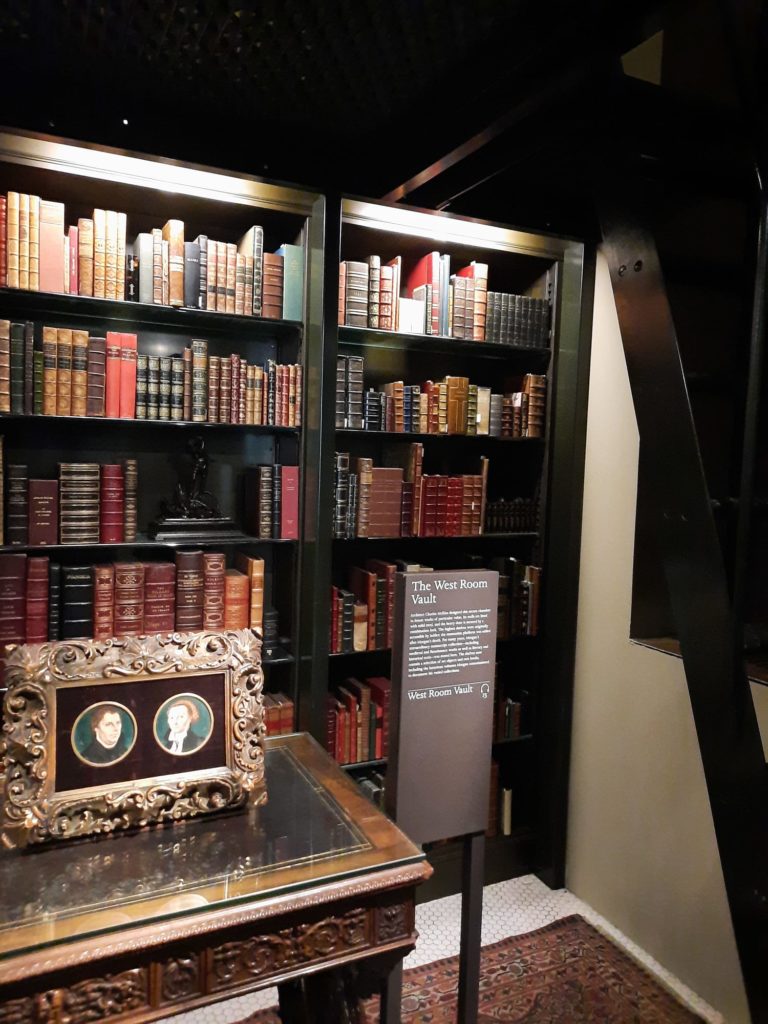
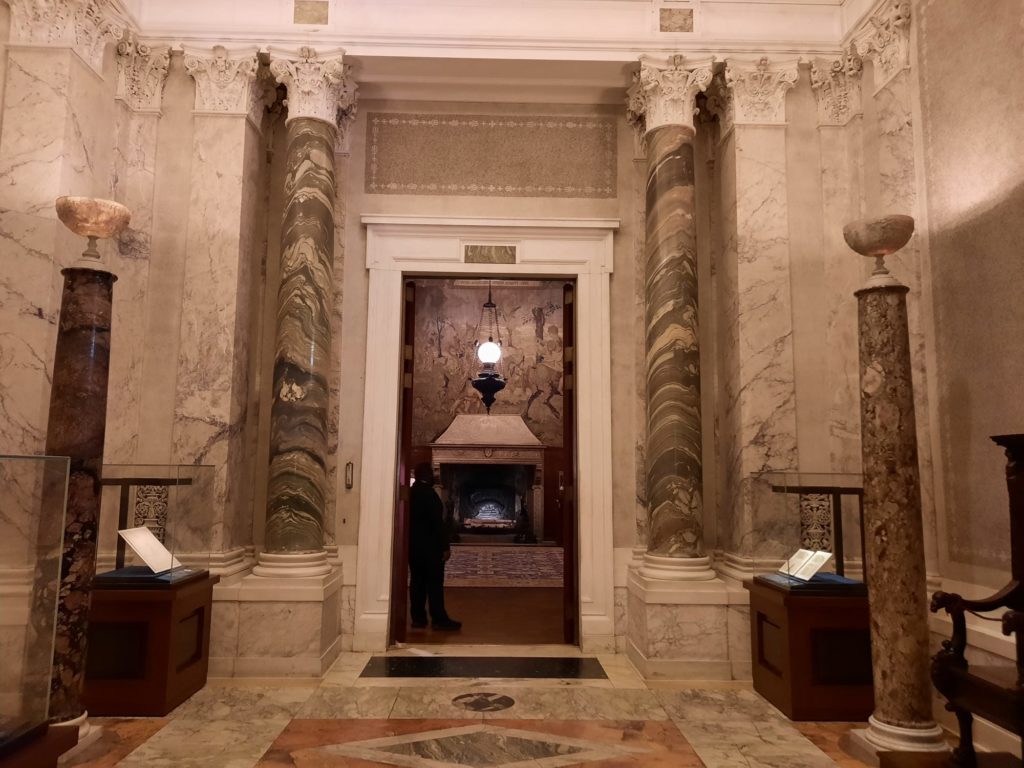
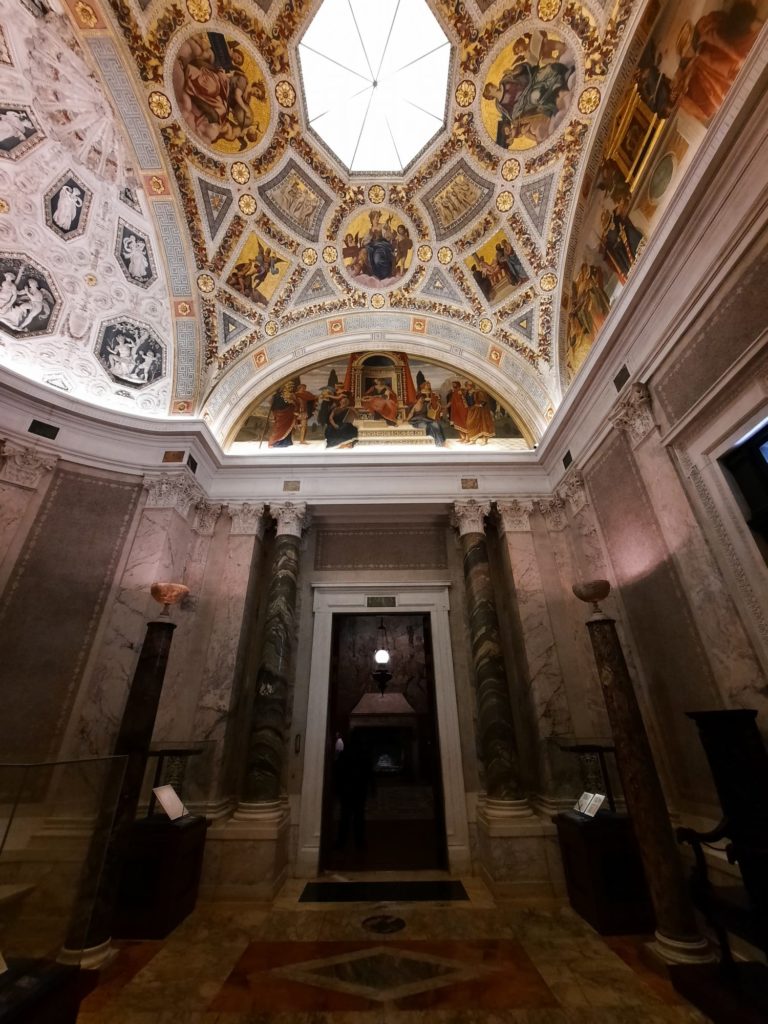
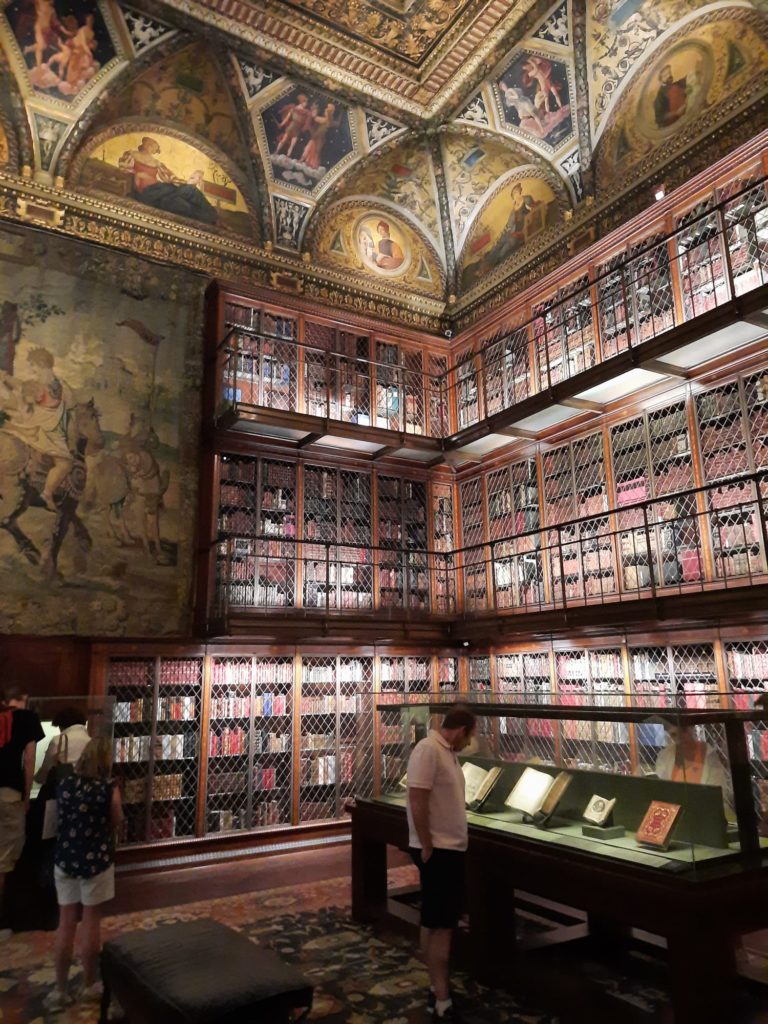
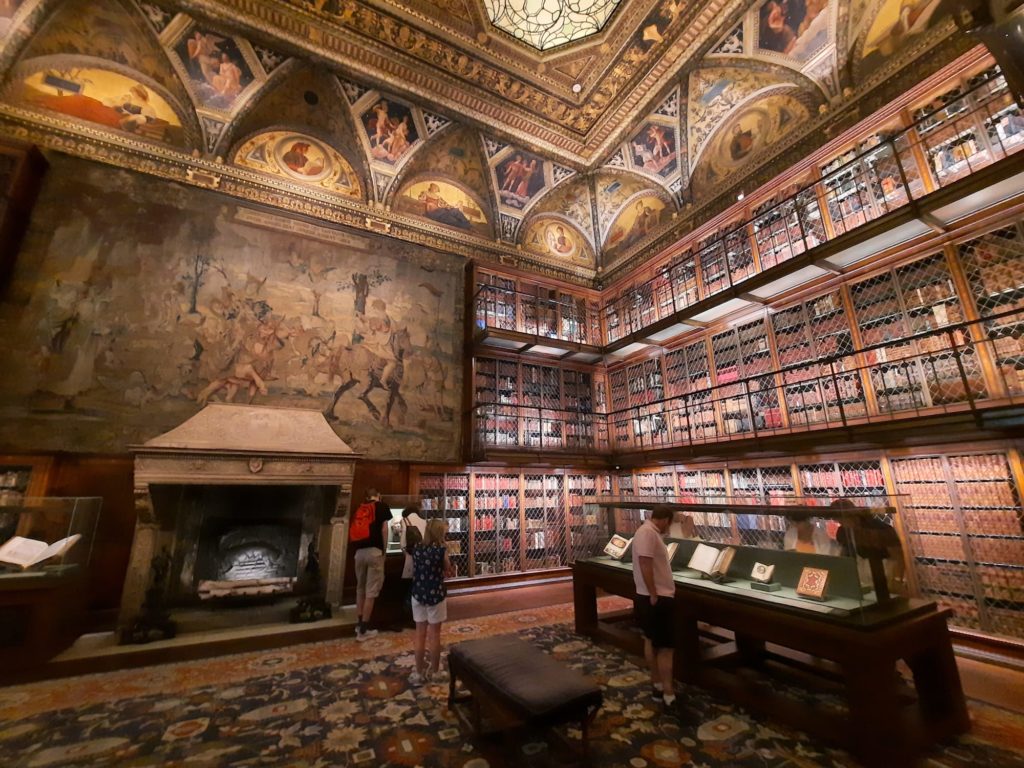
The Morgan Library
It wasn’t too long before Morgan’s collection warranted a pretty special space to display it. To this end, he decided to build a dedicated library adjacent to his home on Madison Avenue and 36th Street. Morgan engaged Charles McKim as architect and tasked him with creating something intimate in scale yet reflective of the opulence of its holdings.
The J. Pierpont Morgan Library was thus built between 1902 and 1906. The building is an Italian Renaissance-style palazzo with three rooms: Morgan’s office, a library, and a smaller display room which doubled as a director’s office. There are beautiful painted ceilings, rich marbles, and soaring bookcases. It’s a fitting monument to an impressive collection.
J. Pierpont Morgan died in Rome in 1913. His body was transported back for burial in Connecticut, via New York, and the whole affair was treated almost like a state funeral. His son J. P. Morgan Jr. (known as Jack) took over. In 1924, he realised the collection was too important to remain in private hands, and made it into a public institution. The Morgan’s next door home was demolished in 1928 to make more space, Jack Morgan’s former residence was added in 1988, and a 2006 expansion was designed (just like the Art Institute of Chicago) by Renzo Piano.
So today’s visitor sees a much bigger site than J. Pierpont Morgan ever envisaged. There’s a lot of exhibition space, a cafe, and even a concert venue. The heart of the place though, now as ever, is the library.
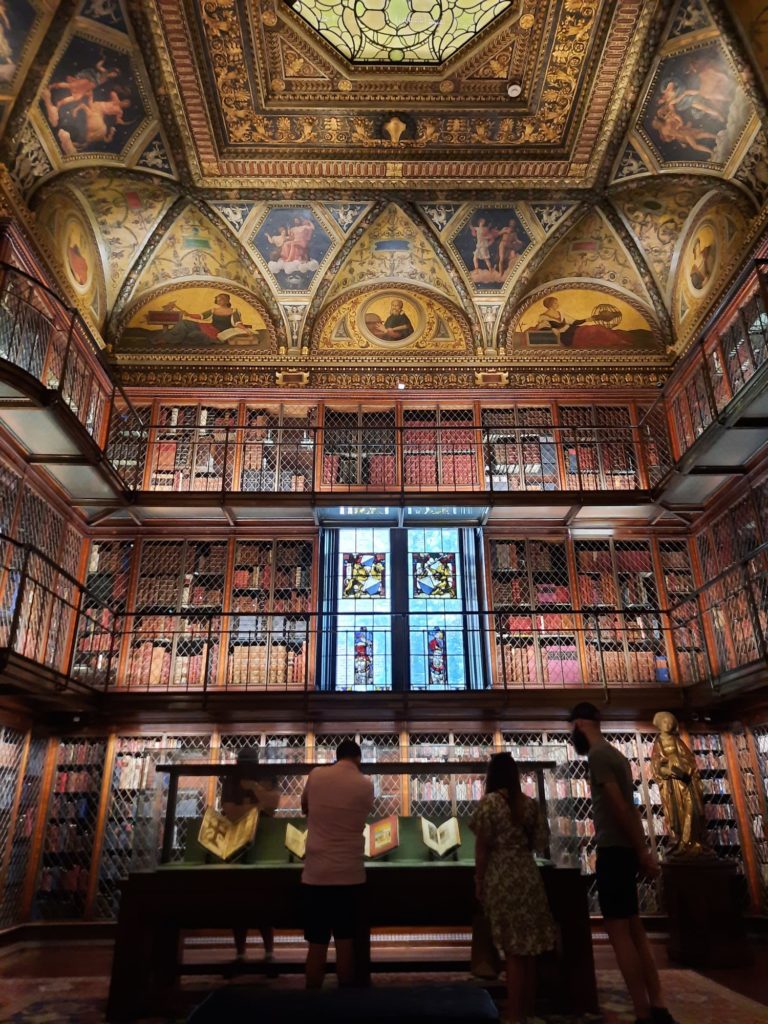
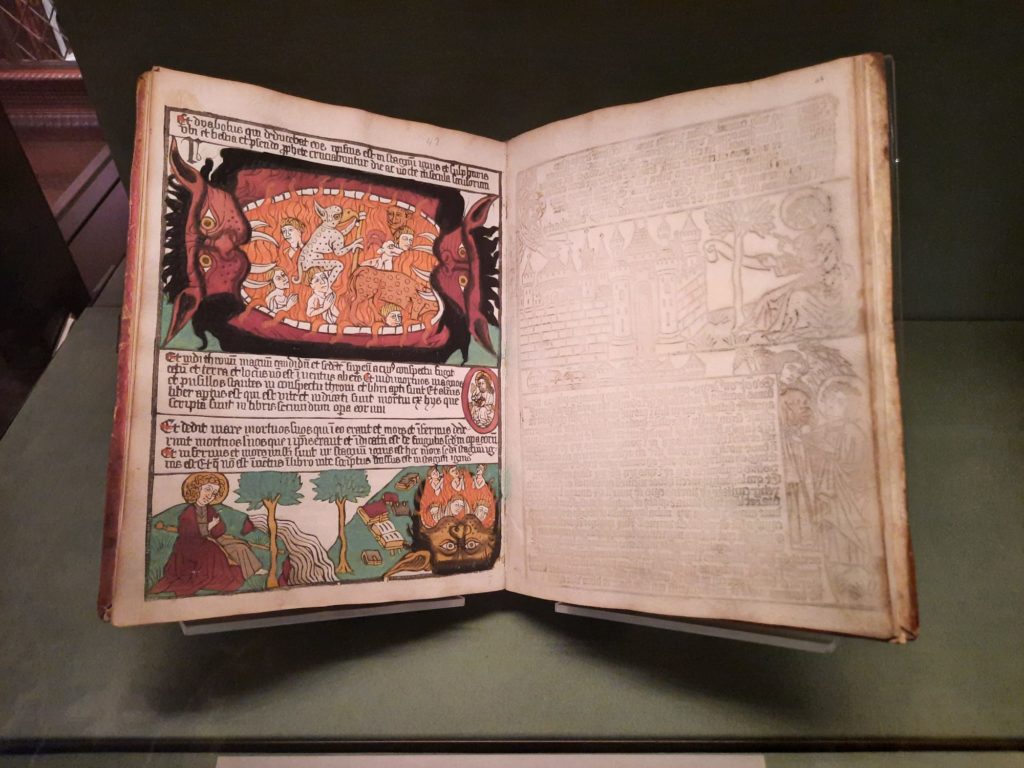
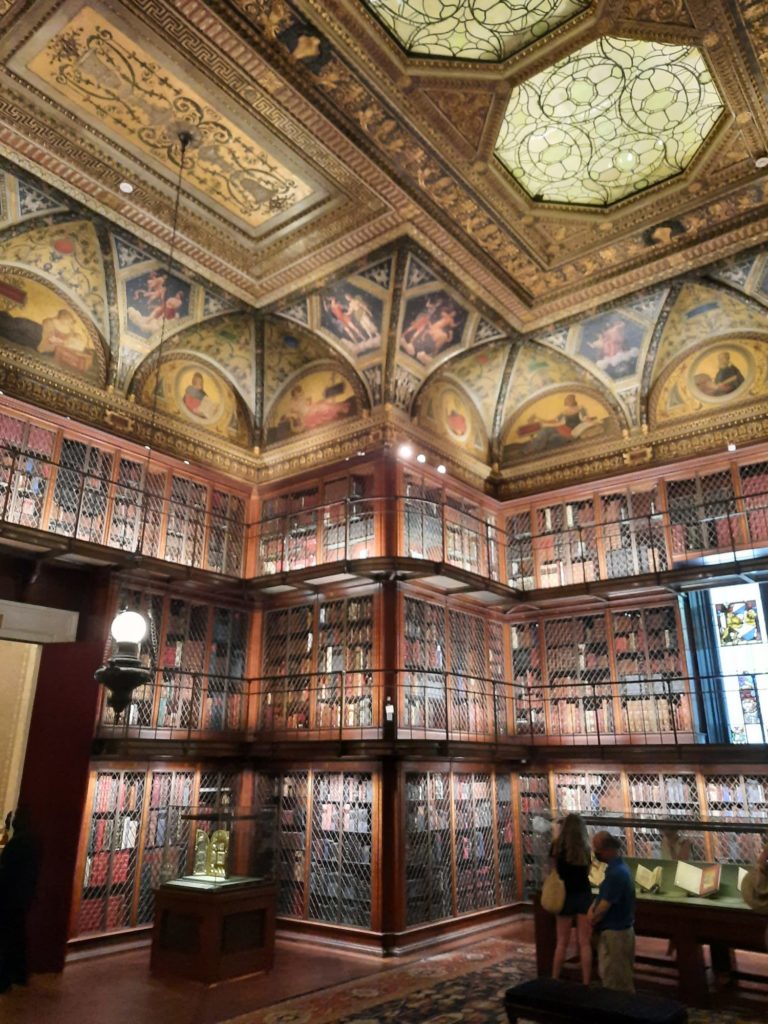
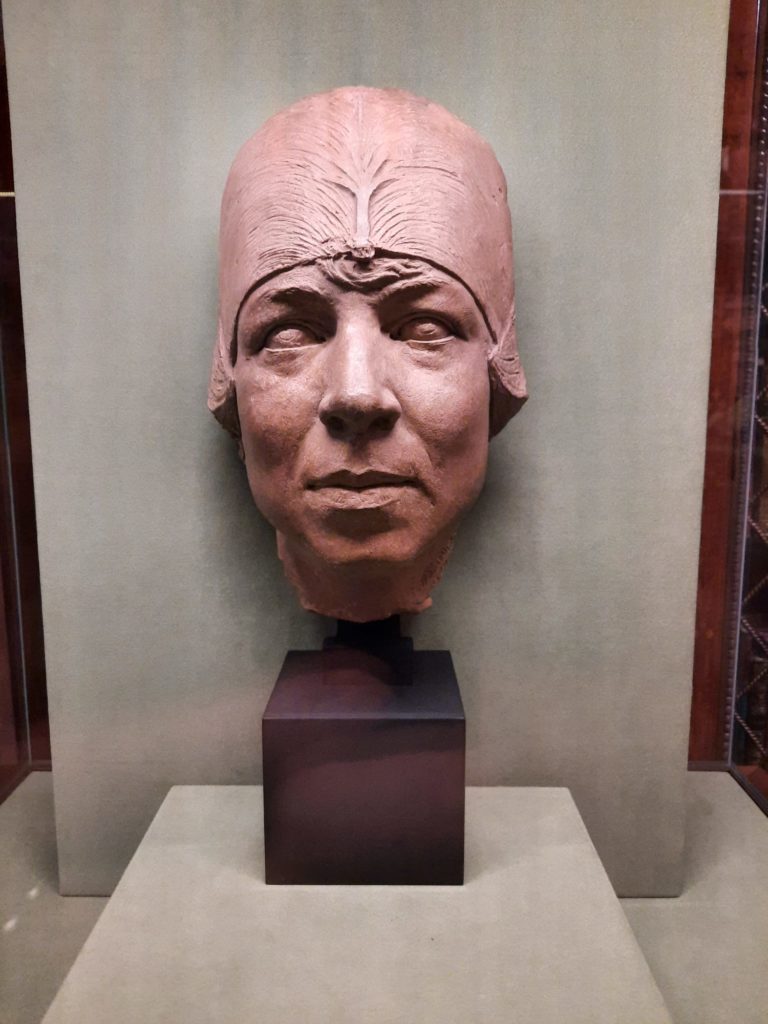
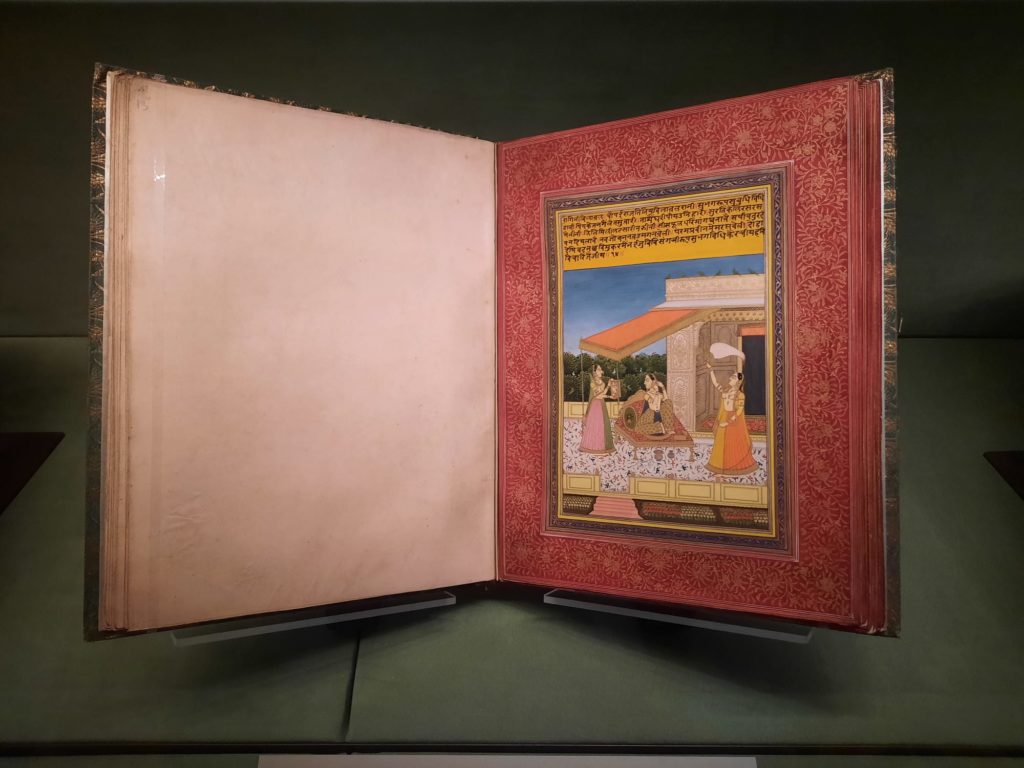
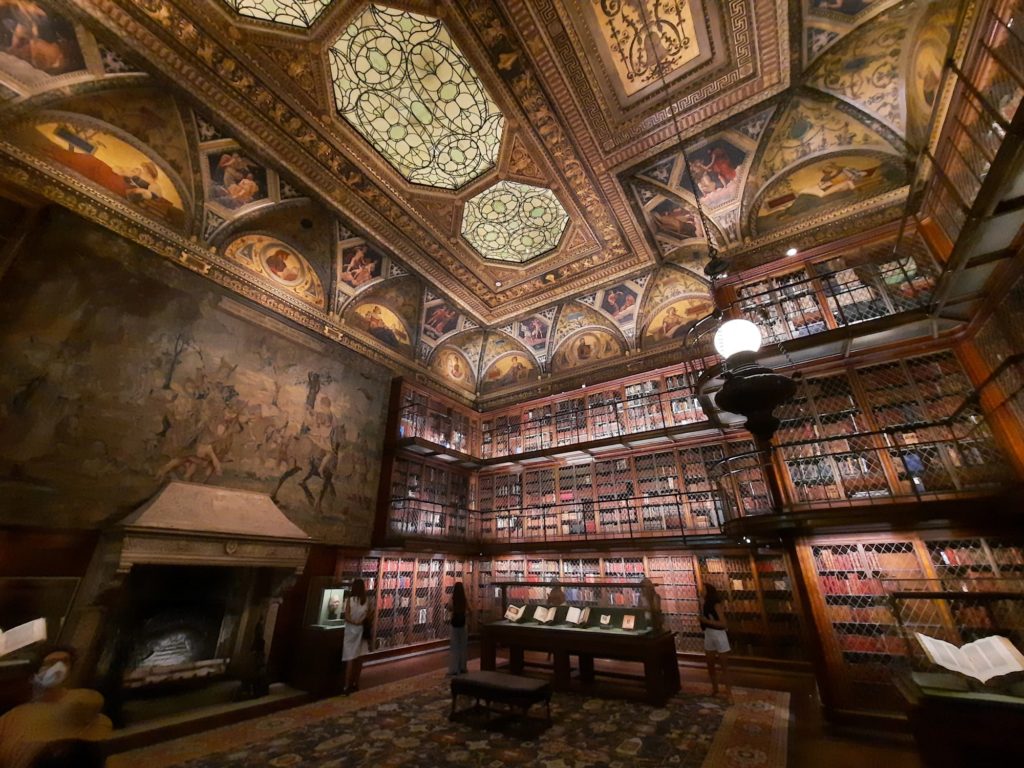
Visiting the Morgan Library And Museum
On our visit to the Morgan Library we began with the original library building, before moving on to the temporary exhibitions. And stopping in the cafe, which is lovely and recommended by the Salterton Arts Review. But anyway, starting in the oldest part is a nice way to do it, as is beginning with Morgan’s office before dazzling yourself with the library proper.
Morgan’s office gives a sense of the man: his artistic tastes, his historic bent, and the way that he kept his best treasures close in a walk-in vault. There’s a nice portrait of an unidentified Black man by the workshop of Tintoretto. And a lot of nice fragments of stained glass which Morgan had inserted into his windows at great effort and expense.
Nice as Morgan’s study is, however, it doesn’t quite prepare you for the library itself. Books over three stories with mezzanine access. Display cases with some of the rarest works, including those Gutenberg Bibles I mentioned, Indian miniatures, and rare musical manuscripts. It’s just incredible, and overwhelms the senses. Even in a city with many important cultural institutions, the Morgan Library feels very special. I can’t quite believe it’s taken me this long to visit!
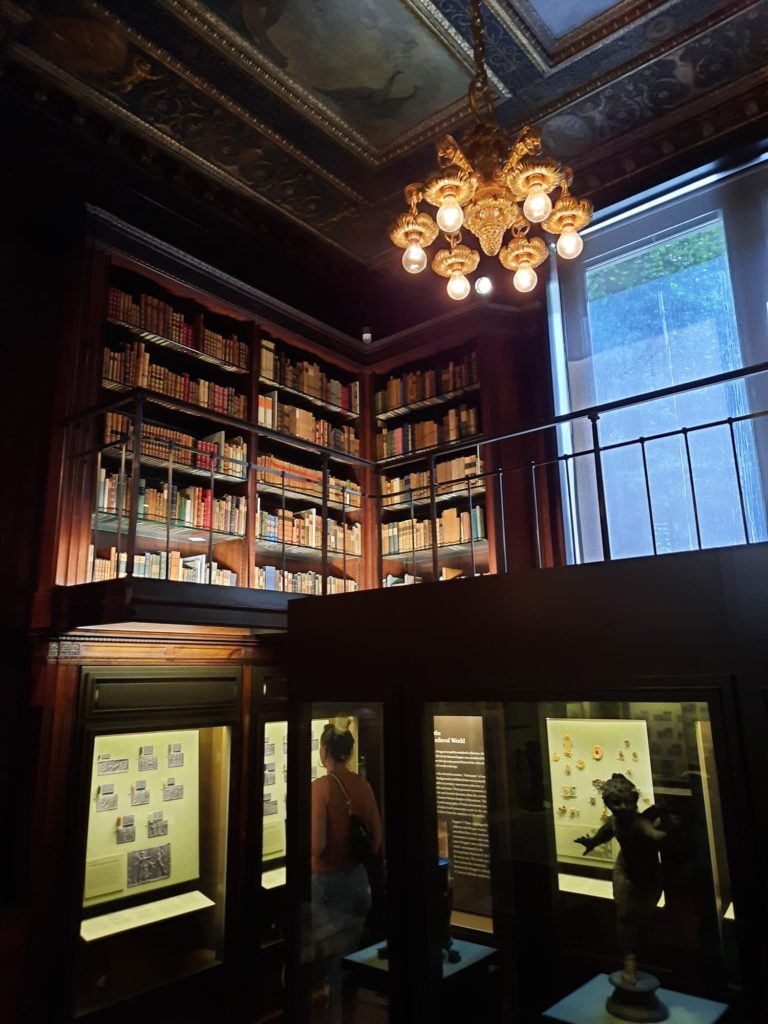
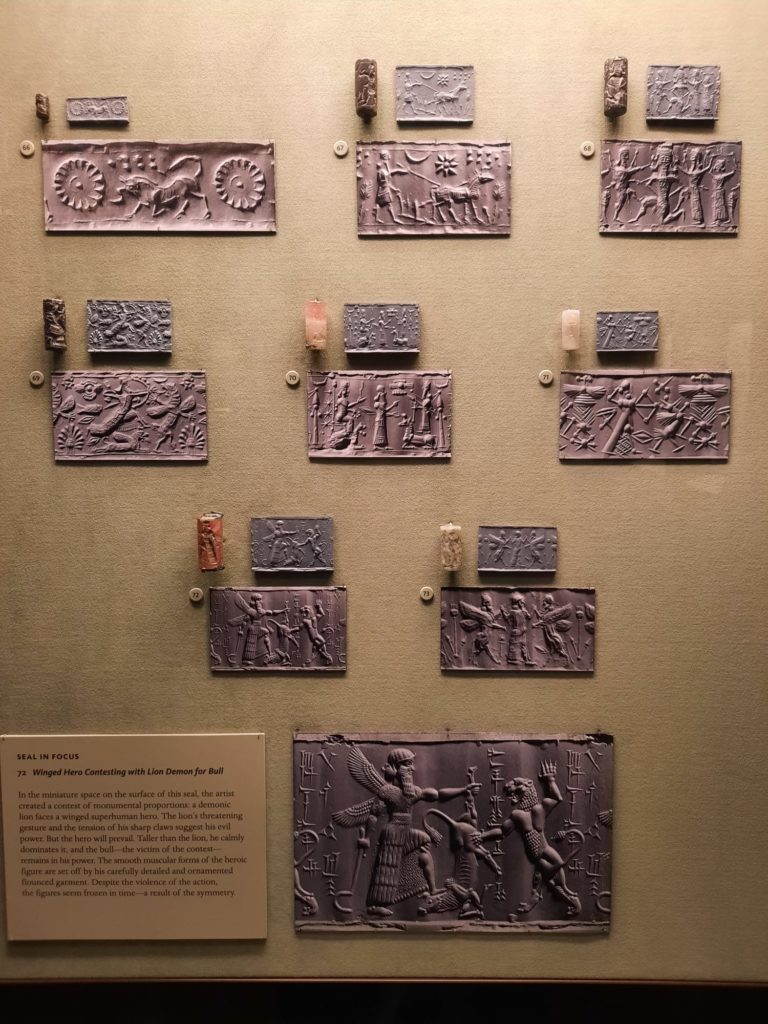
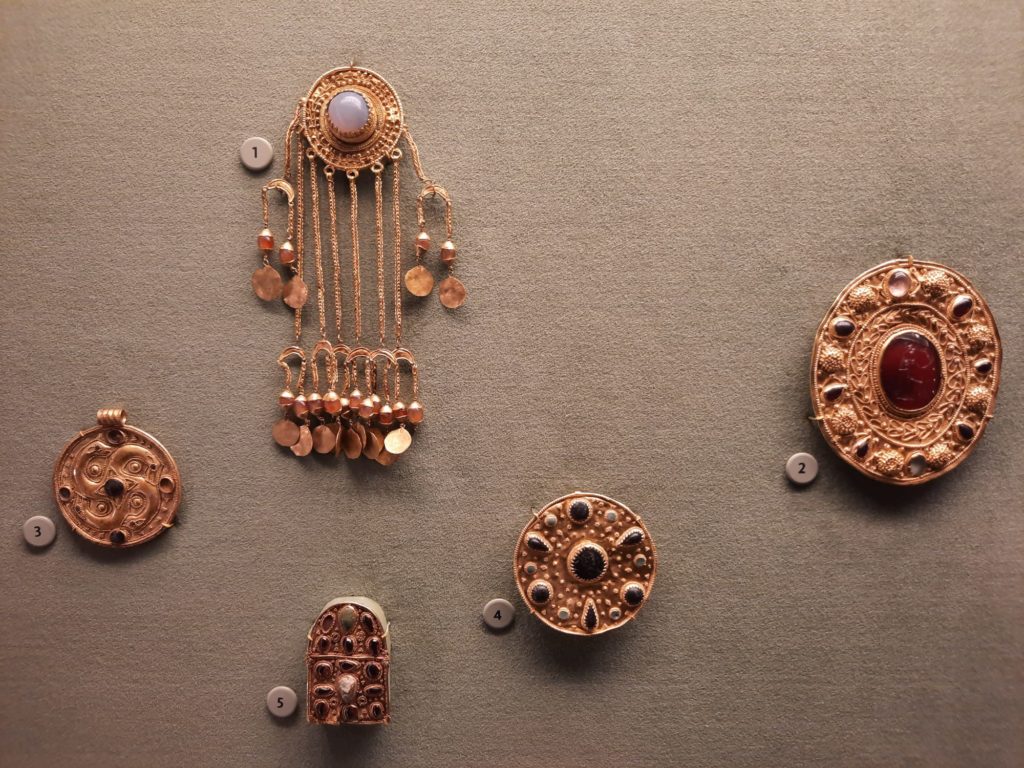
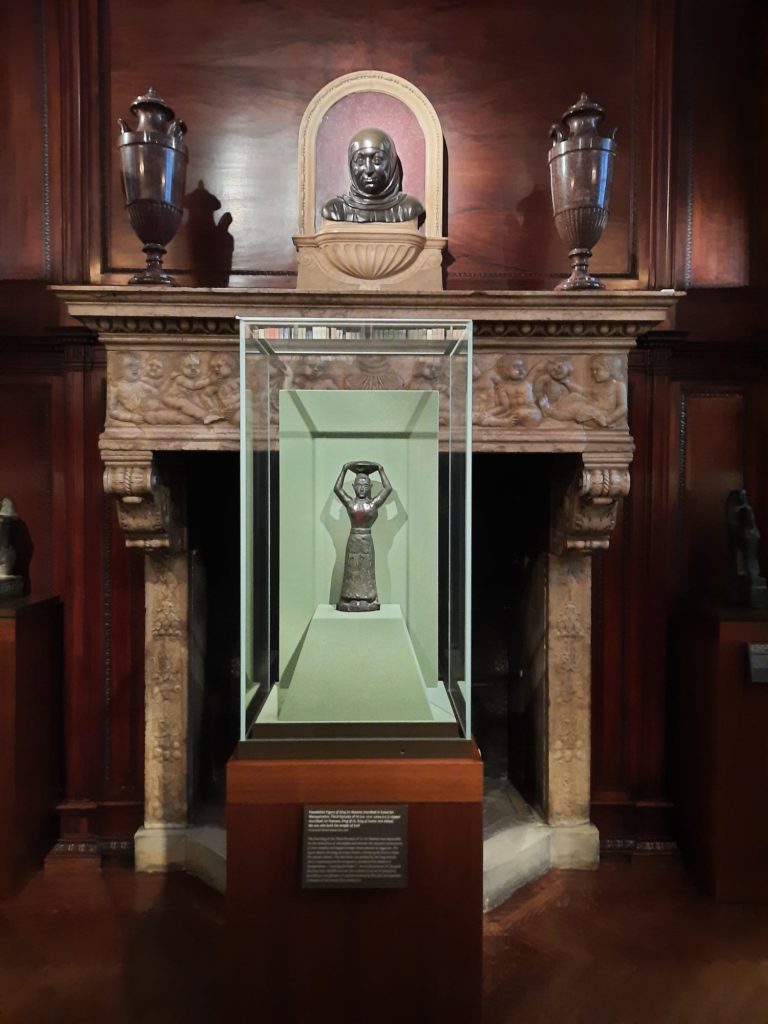
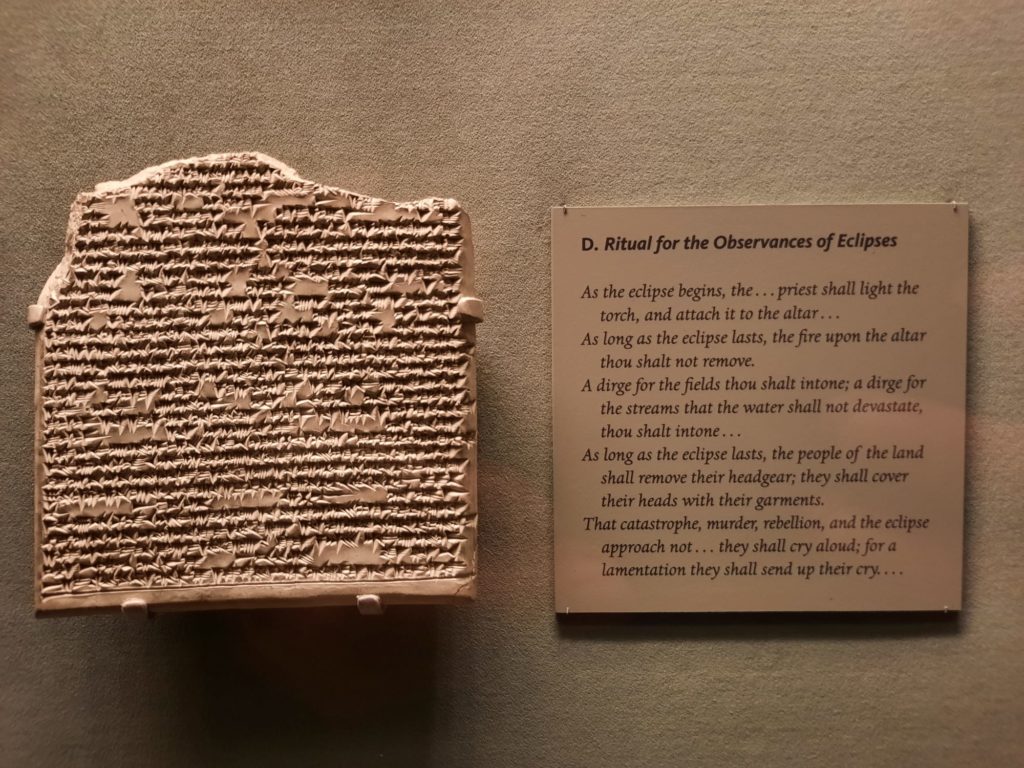
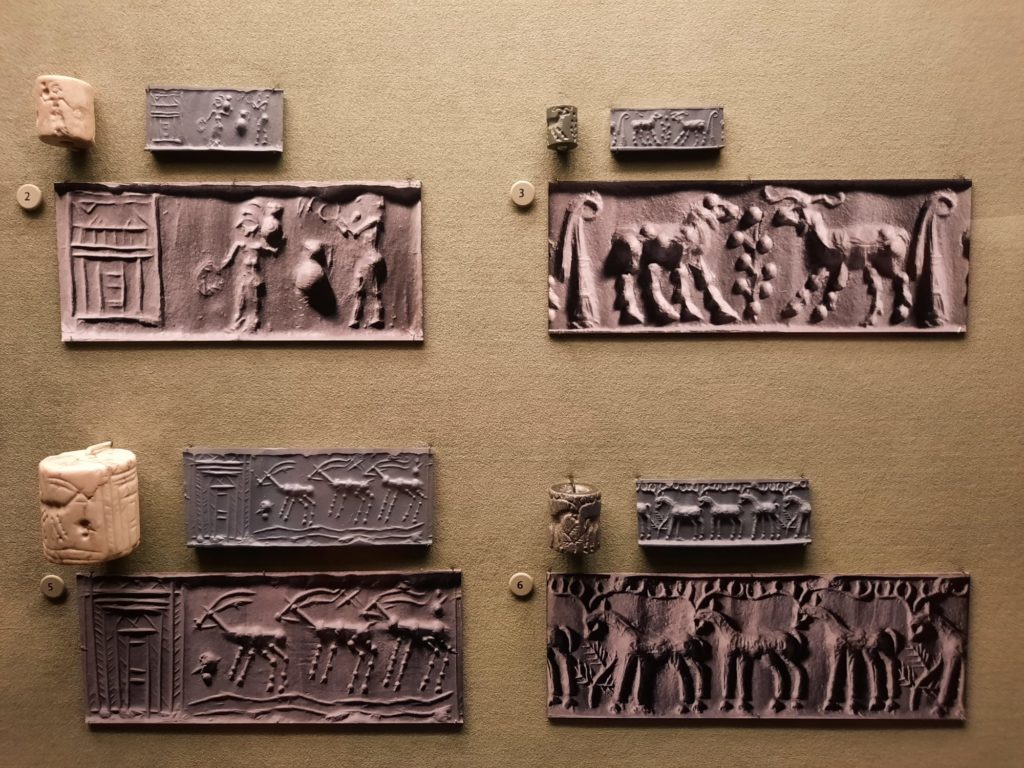
Belle da Costa Greene
In the third room of the original McKim building, an intriguing story comes to the forefront. This is the story of the Morgan Library’s first Librarian and Director, Belle da Costa Greene. Born Belle Greener in 1879, she was the daughter of Richard Theodore Greener, Harvard’s first Black graduate. Belle grew up in a community of colour in Washington D.C., but ultimately chose to live as White, adopting Da Costa as a middle name and dropping the final ‘r’ from her surname. Morgan knew Belle’s father, and it’s likely (though not entirely certain) that sooner or later he knew of their family connection.
In any event, Greene became Morgan’s librarian in 1905, and worked from this third room, which now displays additional Morgan collections like ancient seals and medieval gems. She remained in this role for 19 years and was then the first Director once the institution became public, for an additional 24 years. In a field dominated by white men, she built one of the finest collections in the country. Her story has been brought forward from the shadows in recent years, and continues to inspire new generations in the form of curatorial fellowships amongst other initiatives.
As an aside before we finish up in the McKim building, I found the way the Morgan Library display their ancient seals to be very pleasing. Each seal has an impression and an enlarged image, and then one seal per case is explored in depth. It’s a nice way to bring some of the smallest objects in the collection to life.
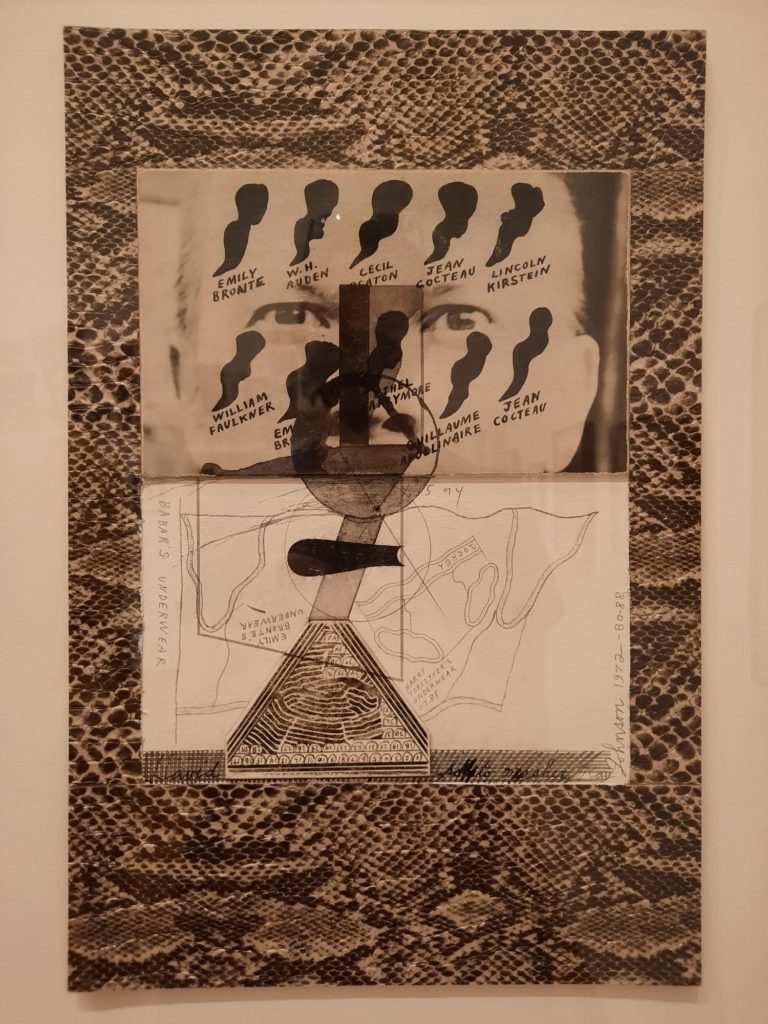
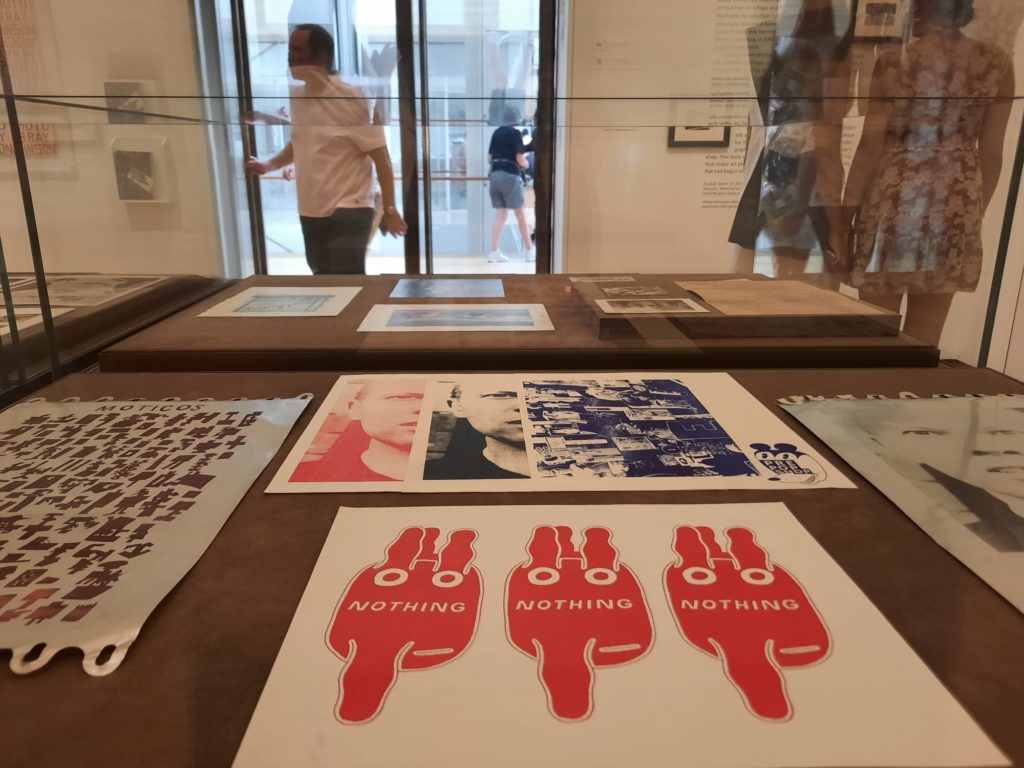
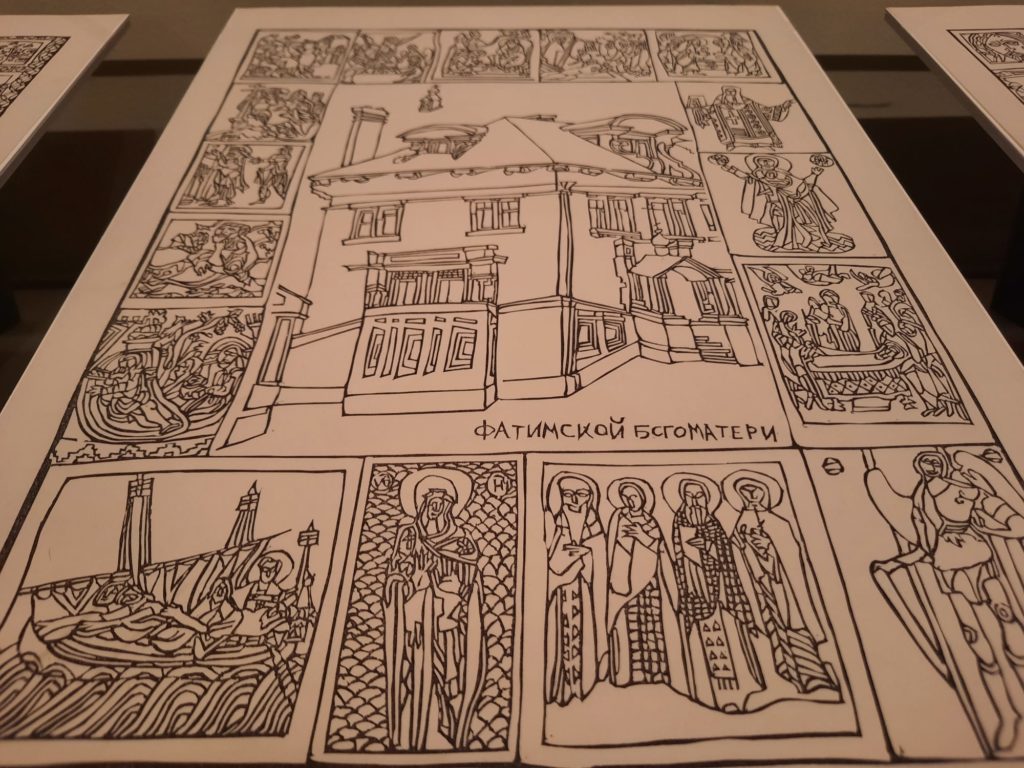
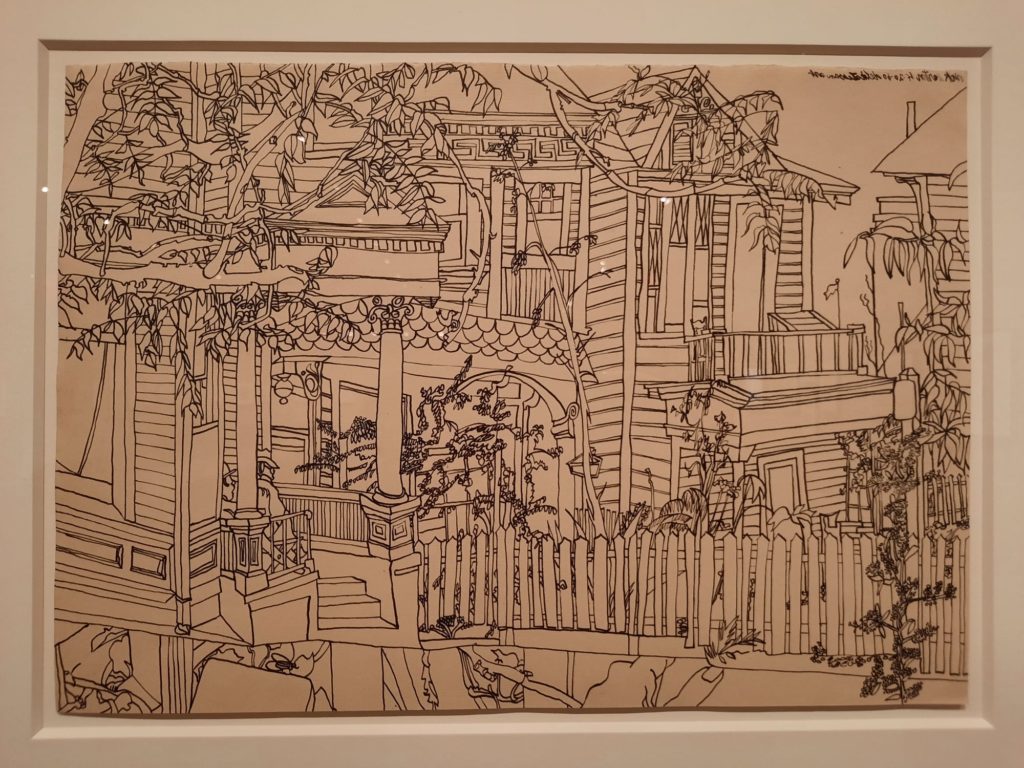
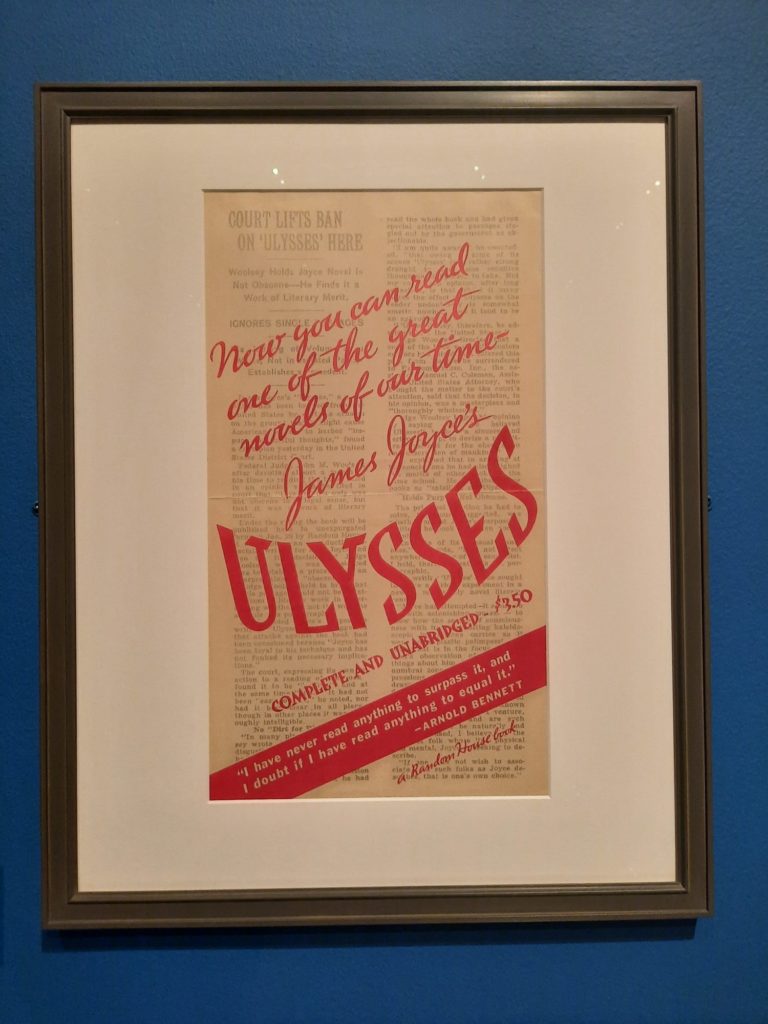
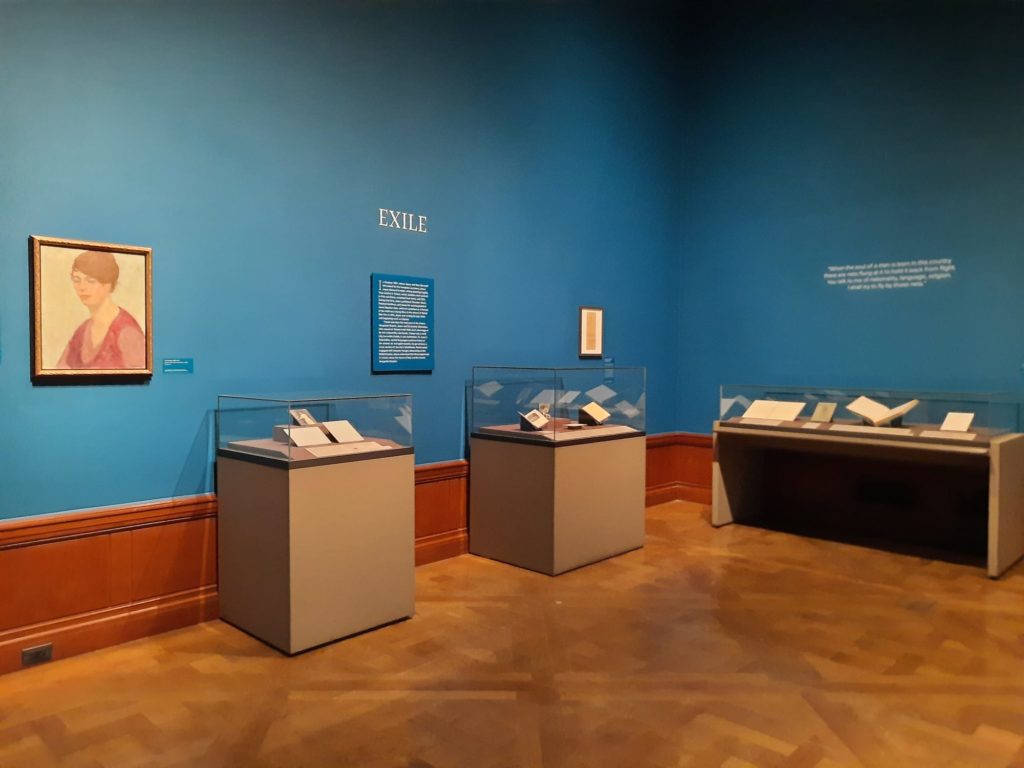
Temporary Exhibitions At The Morgan Library And Museum
With all those expansions over the years, the Morgan Library have a decent amount of space for exhibitions. When I visited (in July 2022) there were four. Three were downstairs at ground level, and a fourth upstairs in another dedicated exhibition space. For one of them I will go into more depth in a separate section below, but in the meantime I will give a quick overview of the others.
PLEASE SEND TO REAL LIFE: Ray Johnson Photographs
Until 2 October 2022
Johnson seems to have been a fairly troubled artist, a pioneer of pop art and mail art. He stopped exhibiting in 1991, but continued to create art until his death in 1995. In particular, he left behind a large volume of photographs taken with disposable cameras, which is large what’s on view here, as well as photographic collages. It’s creative and quirky yet tinged with a sadness that it’s hard to separate from Johnson’s biography.
Writing a Chrysanthemum: The Drawings of Rick Barton
Until 11 September 2022
Barton was another artist previously unknown to me. Actually little is known about him generally, but we do know that he created a large number of incredibly intricate drawings. His drawings of people, interiors and architecture have a nice mid-century feel to them. He deserves to be better known: this is the first real exhibition of his work outside small-scale displays in cafes etc. in the 1950s and 60s.
One Hundred Years Of James Joyce’s Ulysses
Until 2 October 2022
This is a fairly major exhibition, but James Joyce isn’t really my thing so I didn’t spend long enough on it to give an in-depth write up. The exhibition brings together early editions of Joyce’s Ulysses with materials surrounding its creation and reception. It was interesting to see the impact of charismatic supporters on the work’s publication. I include here Sylvia Beach, who opened English-language bookstore Shakespeare and Company in Paris in 1919.
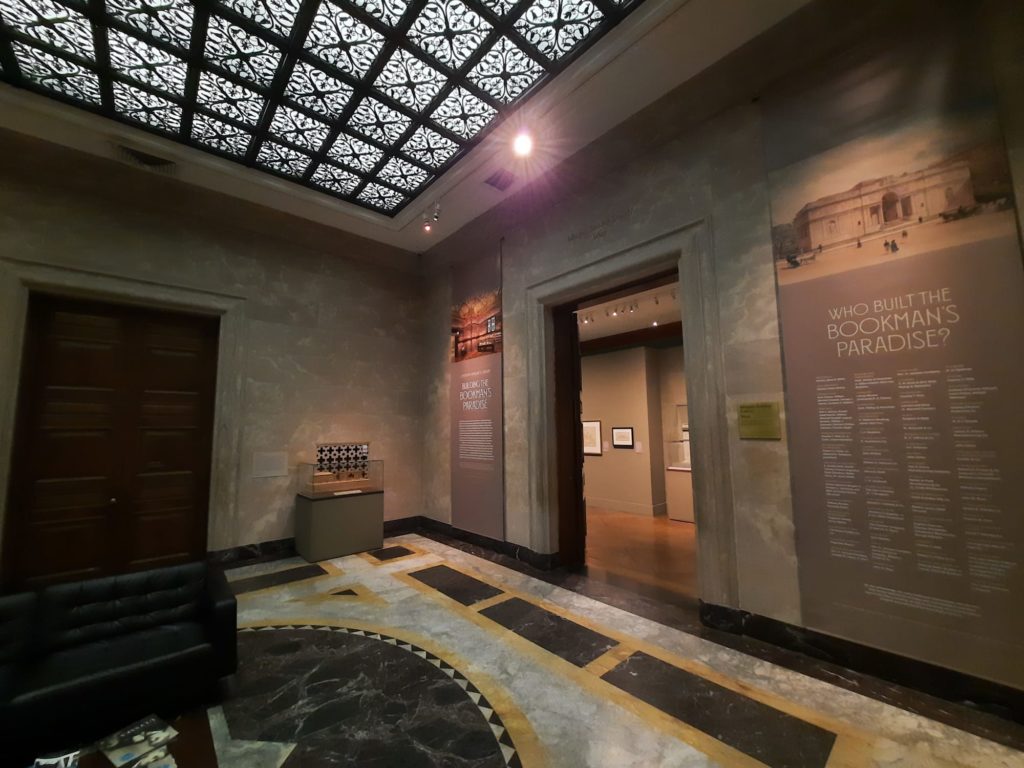
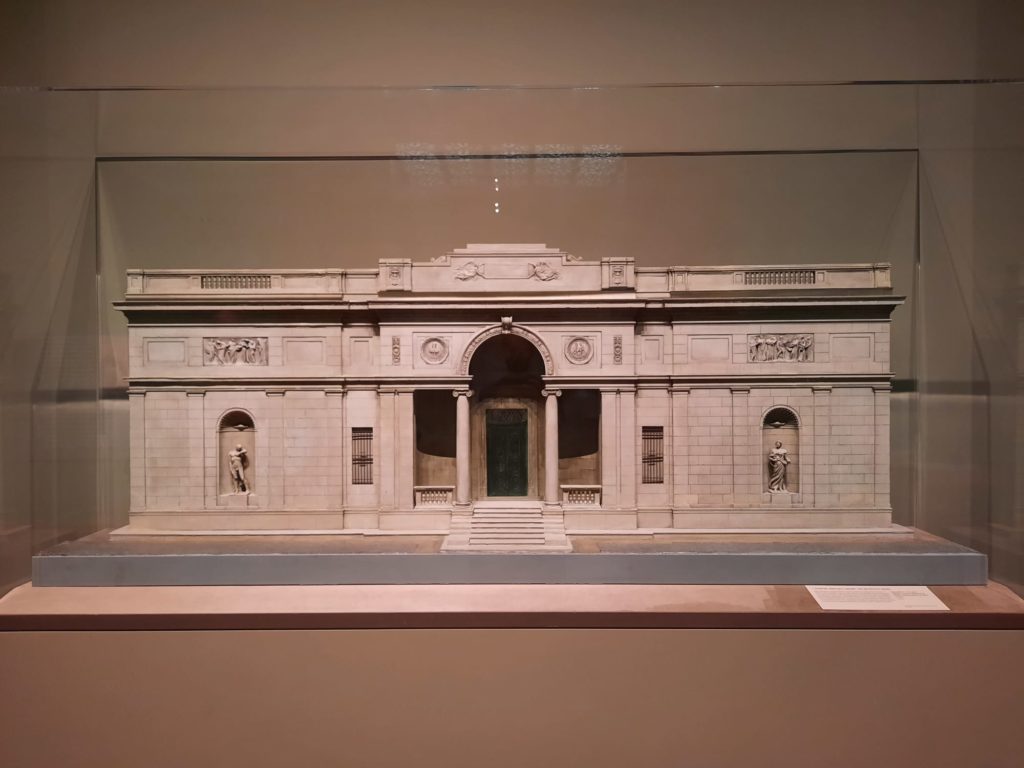
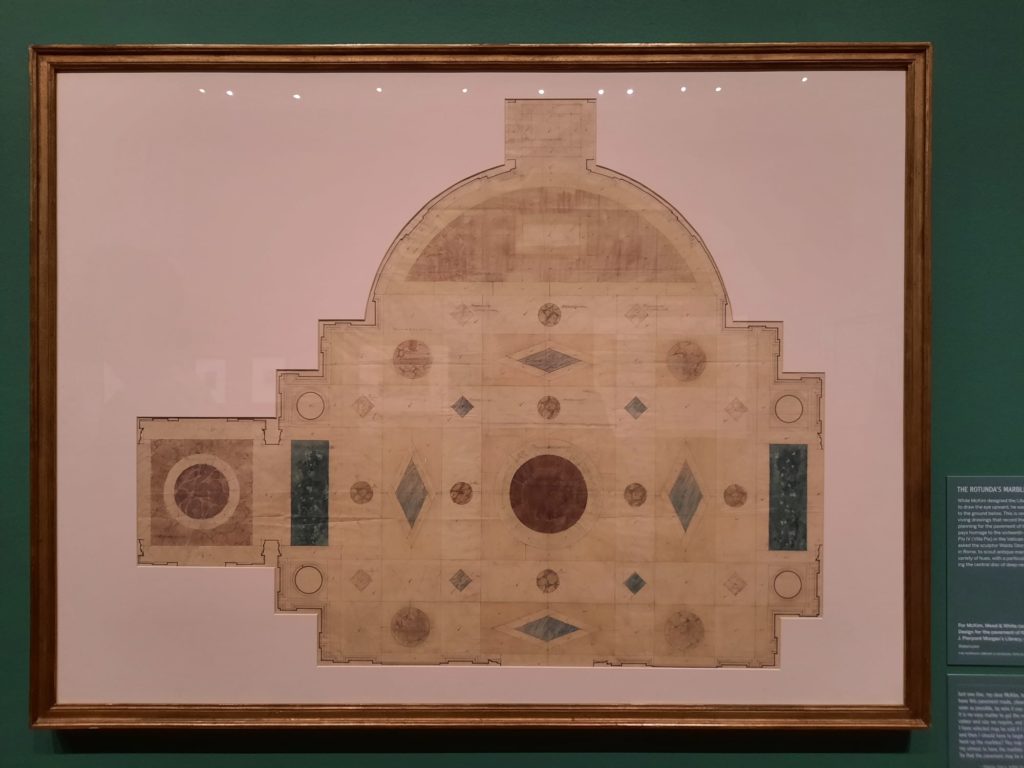
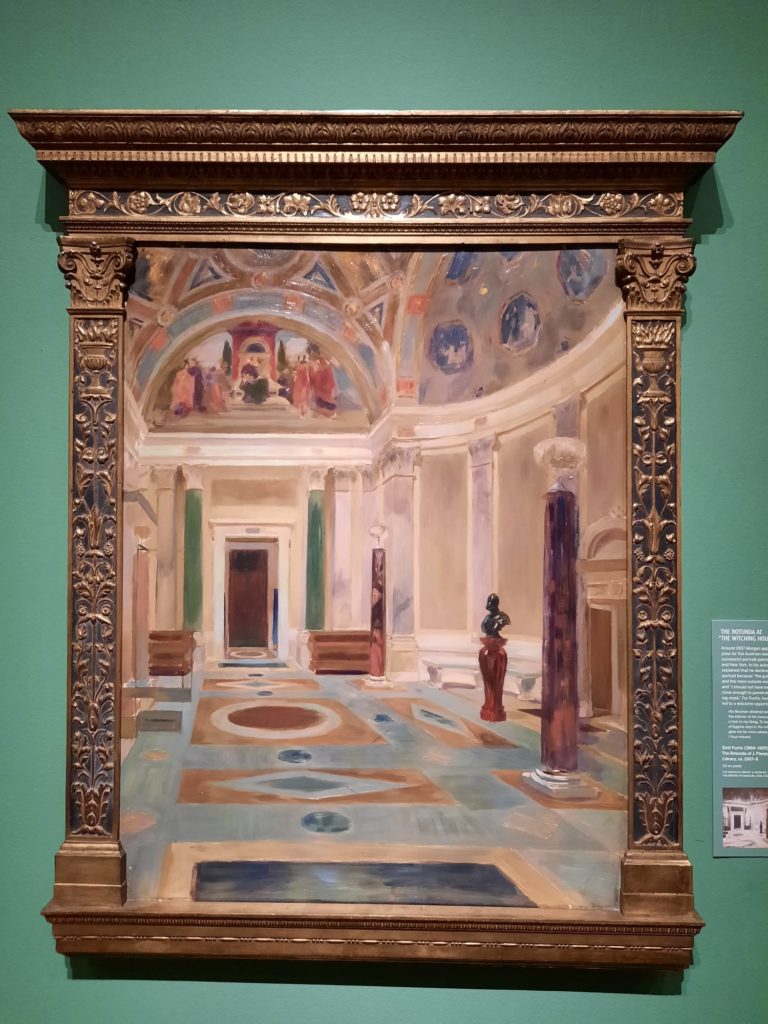

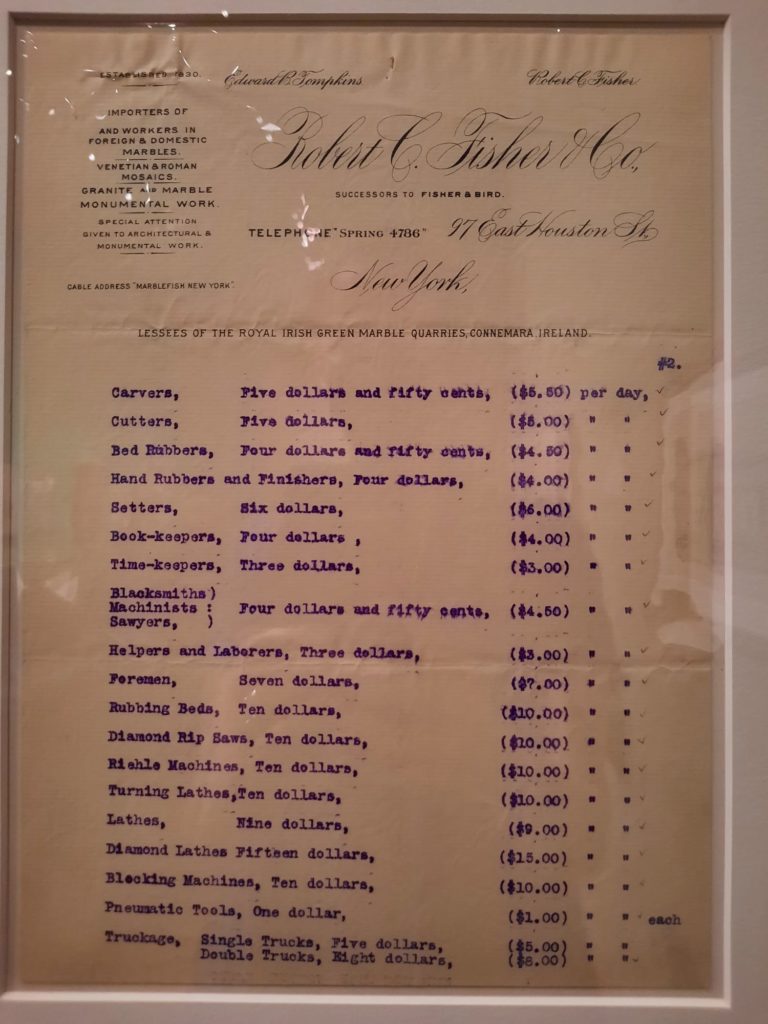
Building The Bookman’s Paradise
The exhibition which I spent the most time in was J. Pierpont Morgan’s Library: Building The Bookman’s Paradise. This is a look at how the library came to be. It’s illustrated by architectural drawings, period photographs, objects from the collection and other ephemera. There is a focus on telling the stories not just of the named individuals like architect Charles McKim, but the many unnamed workmen and women who contributed their skills and labour to Morgan’s library.
It was a perfect exhibition for someone new to the Morgan Museum and Library. It set the historic scene very well in terms of Morgan, his collection, and his project to create a home for it. It’s very interesting to see early oil sketches of the building by artist Emil Fuchs, as well as contemporary photographs. Some of the most fascinating works from the collection are also included in the exhibition, including a thousand-year-old, purple dyed gospel, and the exquisite, jewel-bound Lindau Gospels. Although perhaps my favourite of all was an invoice from a stone contractor breaking down the cost of each tradesman’s day rate. A rare and often overlooked viewpoint.
Even if you don’t have the opportunity to see this exhibition, the Morgan Library and Museum do a good job of interpreting their story in person and online. This wonderful temple to books and learning (and personal wealth) is well worth a visit. Don’t delay your visit as long as I did!
Salterton Arts Review’s rating: 4/5
J. Pierpont Morgan’s Library: Building the Bookman’s Paradise: 4/5
Exhibition until 18 September 2022
If you see this after your page is loaded completely, leafletJS files are missing.

